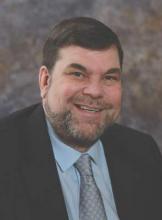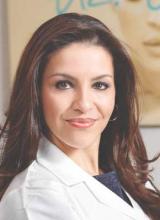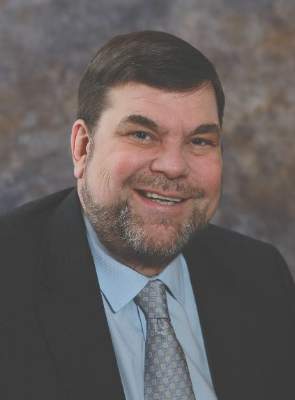User login
Three Dermatology News editorial advisers provide their recommendations on how to get the most out of the 74th Annual Meeting of the American Academy of Dermatology, March 4-8, in Washington, D.C.
Bring comfortable shoes, check the weather, vote, and enjoy
Dr. Brett Coldiron, a past-president of the AAD, who is in private practice in Cincinnati, recommends comfortable shoes. “The distance you have to walk is astounding, and the timelines can be tight.”
“Map out where you need to be,” he added. Smartphone aficionados will want to download the meeting app while old-school navigators can use the program book to get a handle on the layout of the convention center and headquarters hotel.
“It’s no fun to race across the convention center and arrive at a meeting room that is overcrowded and have to sit on the floor. I always look for seats up front and in the middle – and don’t hesitate to ask someone to pick up their stuff from the seat next to them.”
Dr. Coldiron pointed out that the weather in Washington in March can be brutal ... or beautiful ... or even feature buckets full of rain, so he also suggested checking the area’s extended weather forecast.
“As far as actual content, it is a wonderful educational smorgasbord. Enjoy yourself,” he said. “Make an effort to attend the speeches and the plenary session. I urge you to review the candidates’ material and vote. These elections are usually decided by only a few hundred votes, so your vote really does count.”
Narrow your information focus
Dr. Adam Friedman of the department of dermatology at George Washington University, Washington, said that with more than 375 sessions at the annual meeting, selecting which programs to attend can be overwhelming.
His advice: “Pick two to three specific topics or skills you want to expand upon or develop and go after sessions pertaining to them. Don’t spread yourself too thin.”
For residents, Dr. Friedman, the director of GWU’s residency program, referred to the multiple professional development and board prep courses available at the meeting.
“At this stage in one’s career, it's important to acquire practical tips from contract negotiation to speaker training, as many of these skills are lacking during residency training. Whether you are preparing for the in-training exam or the boards, programs such as Board Blitz (Symposium S033, Sunday at 1 p.m.) and Board Prep for Residents (Course 005, Friday at 9 a.m.) will help you along the way.”
Want to stay on the cutting edge? Consider attending the multiple “hot topics” sessions scheduled throughout the meeting, with a general overview session to be held on Friday (Symposium 018, at 1 p.m.). There are also multiple “new and emerging” sessions, such as New Emerging Therapies (Symposium 011, also Friday at 1 p.m.), that will provide “a look down the road as to what is up and coming.”
What about catching up on the key research published in the last year? Dr. Friedman said, “Check out ‘Highlights from JAAD’ (Focus Session 075, Sunday at 4:30 p.m.), during which editor-in-chief Dr. Bruce Thiers cherry picks his favorite papers of the year. Not to be missed!”
Difficult to treat diseases
Dr. Lily Talakoub, who is in private practice in McLean, Va., recommended the many wonderful talks on difficult-to-treat diseases, “with insights on pearls and new advances in treatments – scarring alopecias, vitiligo, and melasma, just to name a few.”
“These talks are my personal refreshers on topics that always pose patient treatment difficulties. Despite the scarcity of treatment options for these diseases, I will be looking for discussions on newer advances in alternative treatments,” she said.
Three Dermatology News editorial advisers provide their recommendations on how to get the most out of the 74th Annual Meeting of the American Academy of Dermatology, March 4-8, in Washington, D.C.
Bring comfortable shoes, check the weather, vote, and enjoy
Dr. Brett Coldiron, a past-president of the AAD, who is in private practice in Cincinnati, recommends comfortable shoes. “The distance you have to walk is astounding, and the timelines can be tight.”
“Map out where you need to be,” he added. Smartphone aficionados will want to download the meeting app while old-school navigators can use the program book to get a handle on the layout of the convention center and headquarters hotel.
“It’s no fun to race across the convention center and arrive at a meeting room that is overcrowded and have to sit on the floor. I always look for seats up front and in the middle – and don’t hesitate to ask someone to pick up their stuff from the seat next to them.”
Dr. Coldiron pointed out that the weather in Washington in March can be brutal ... or beautiful ... or even feature buckets full of rain, so he also suggested checking the area’s extended weather forecast.
“As far as actual content, it is a wonderful educational smorgasbord. Enjoy yourself,” he said. “Make an effort to attend the speeches and the plenary session. I urge you to review the candidates’ material and vote. These elections are usually decided by only a few hundred votes, so your vote really does count.”
Narrow your information focus
Dr. Adam Friedman of the department of dermatology at George Washington University, Washington, said that with more than 375 sessions at the annual meeting, selecting which programs to attend can be overwhelming.
His advice: “Pick two to three specific topics or skills you want to expand upon or develop and go after sessions pertaining to them. Don’t spread yourself too thin.”
For residents, Dr. Friedman, the director of GWU’s residency program, referred to the multiple professional development and board prep courses available at the meeting.
“At this stage in one’s career, it's important to acquire practical tips from contract negotiation to speaker training, as many of these skills are lacking during residency training. Whether you are preparing for the in-training exam or the boards, programs such as Board Blitz (Symposium S033, Sunday at 1 p.m.) and Board Prep for Residents (Course 005, Friday at 9 a.m.) will help you along the way.”
Want to stay on the cutting edge? Consider attending the multiple “hot topics” sessions scheduled throughout the meeting, with a general overview session to be held on Friday (Symposium 018, at 1 p.m.). There are also multiple “new and emerging” sessions, such as New Emerging Therapies (Symposium 011, also Friday at 1 p.m.), that will provide “a look down the road as to what is up and coming.”
What about catching up on the key research published in the last year? Dr. Friedman said, “Check out ‘Highlights from JAAD’ (Focus Session 075, Sunday at 4:30 p.m.), during which editor-in-chief Dr. Bruce Thiers cherry picks his favorite papers of the year. Not to be missed!”
Difficult to treat diseases
Dr. Lily Talakoub, who is in private practice in McLean, Va., recommended the many wonderful talks on difficult-to-treat diseases, “with insights on pearls and new advances in treatments – scarring alopecias, vitiligo, and melasma, just to name a few.”
“These talks are my personal refreshers on topics that always pose patient treatment difficulties. Despite the scarcity of treatment options for these diseases, I will be looking for discussions on newer advances in alternative treatments,” she said.
Three Dermatology News editorial advisers provide their recommendations on how to get the most out of the 74th Annual Meeting of the American Academy of Dermatology, March 4-8, in Washington, D.C.
Bring comfortable shoes, check the weather, vote, and enjoy
Dr. Brett Coldiron, a past-president of the AAD, who is in private practice in Cincinnati, recommends comfortable shoes. “The distance you have to walk is astounding, and the timelines can be tight.”
“Map out where you need to be,” he added. Smartphone aficionados will want to download the meeting app while old-school navigators can use the program book to get a handle on the layout of the convention center and headquarters hotel.
“It’s no fun to race across the convention center and arrive at a meeting room that is overcrowded and have to sit on the floor. I always look for seats up front and in the middle – and don’t hesitate to ask someone to pick up their stuff from the seat next to them.”
Dr. Coldiron pointed out that the weather in Washington in March can be brutal ... or beautiful ... or even feature buckets full of rain, so he also suggested checking the area’s extended weather forecast.
“As far as actual content, it is a wonderful educational smorgasbord. Enjoy yourself,” he said. “Make an effort to attend the speeches and the plenary session. I urge you to review the candidates’ material and vote. These elections are usually decided by only a few hundred votes, so your vote really does count.”
Narrow your information focus
Dr. Adam Friedman of the department of dermatology at George Washington University, Washington, said that with more than 375 sessions at the annual meeting, selecting which programs to attend can be overwhelming.
His advice: “Pick two to three specific topics or skills you want to expand upon or develop and go after sessions pertaining to them. Don’t spread yourself too thin.”
For residents, Dr. Friedman, the director of GWU’s residency program, referred to the multiple professional development and board prep courses available at the meeting.
“At this stage in one’s career, it's important to acquire practical tips from contract negotiation to speaker training, as many of these skills are lacking during residency training. Whether you are preparing for the in-training exam or the boards, programs such as Board Blitz (Symposium S033, Sunday at 1 p.m.) and Board Prep for Residents (Course 005, Friday at 9 a.m.) will help you along the way.”
Want to stay on the cutting edge? Consider attending the multiple “hot topics” sessions scheduled throughout the meeting, with a general overview session to be held on Friday (Symposium 018, at 1 p.m.). There are also multiple “new and emerging” sessions, such as New Emerging Therapies (Symposium 011, also Friday at 1 p.m.), that will provide “a look down the road as to what is up and coming.”
What about catching up on the key research published in the last year? Dr. Friedman said, “Check out ‘Highlights from JAAD’ (Focus Session 075, Sunday at 4:30 p.m.), during which editor-in-chief Dr. Bruce Thiers cherry picks his favorite papers of the year. Not to be missed!”
Difficult to treat diseases
Dr. Lily Talakoub, who is in private practice in McLean, Va., recommended the many wonderful talks on difficult-to-treat diseases, “with insights on pearls and new advances in treatments – scarring alopecias, vitiligo, and melasma, just to name a few.”
“These talks are my personal refreshers on topics that always pose patient treatment difficulties. Despite the scarcity of treatment options for these diseases, I will be looking for discussions on newer advances in alternative treatments,” she said.


